Boston Value Series 361p review
Boston’s VS 361p rack server teams up super-fast NVMe SSDs with the latest E5-2600 v3 processors
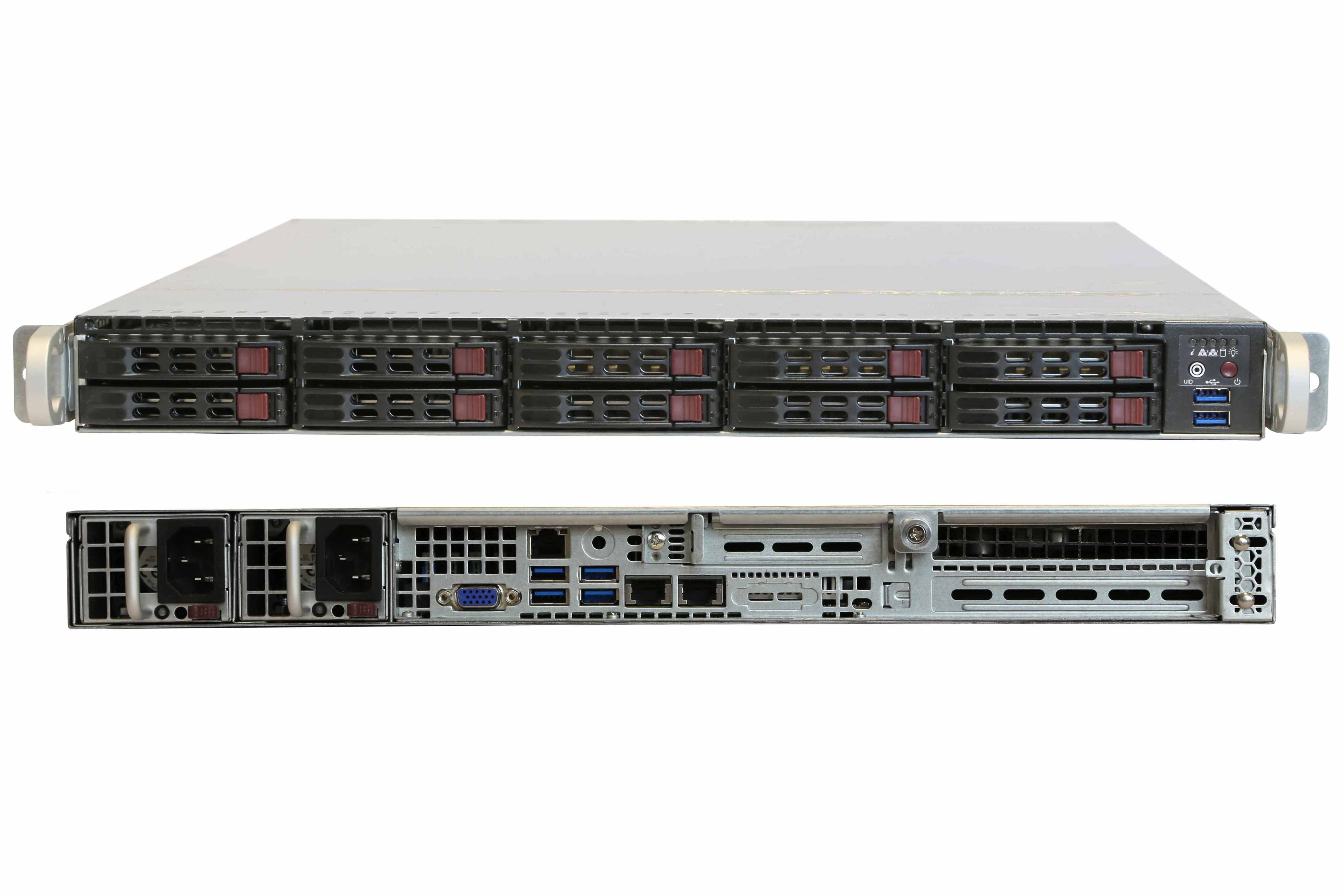

Boston’s slim-line rack server and its NVMe SSD packs a punch in the storage department and is a good choice for I/O intensive workloads. It combine this prowess with E5-2600 v3 Xeons and 12Gbps SAS but the SSDs aren’t cheap.
-
+
Massively fast NVMe SSD storage; SAS 3 support; E5-2600 v3 Xeons; Good value
-
-
SSDs are expensive

There's been a lot of talk about high-speed NVMe SSDs for servers and Boston finally sets the ball rolling as its Value Series 361p showcases Intel's P3600 NVMe SSD.
The VS 361p uses the latest E5-2600 v3 Xeons and DDR4 memory. Storage also gets a boost as this 1U chassis squeezes 10 SFF hot-swap drive bays into its front panel the same number as Dell's 13th Gen PowerEdge R630.
The VS 361p is an all-Supermicro affair comprising its SuperServer 1028R-WC1R rack platform. This potent package teams up its X10DRW-i motherboard with a solid 116AC2-R706WB 1U rack chassis.
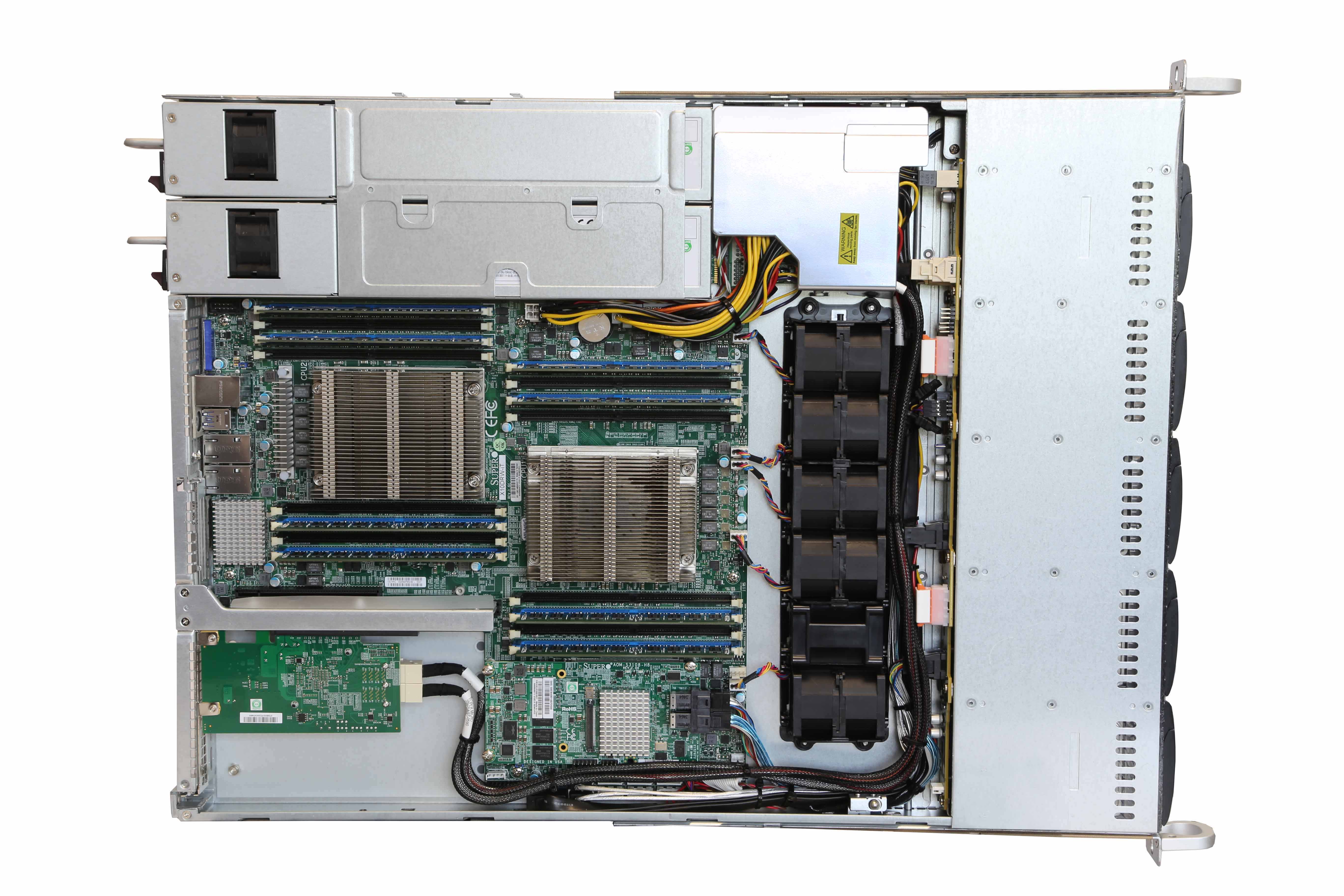
Along with a 12Gbps SAS RAID card, the server has a PCIe-NVMe card cabled to two drive bays
Storage connections
The VS 361p offers a lot of storage permutations as its backplane services all ten bays and has integral support for SATA, 12Gbps SAS and NVMe drives. The motherboard has ten embedded 6Gbps SATA ports and its chipset supports mirrors, stripes and RAID5 arrays.
Boston has boosted storage by fitting a Supermicro AOC-S3108-H8 RAID mezzanine card. This delivers 12Gbps SAS support to the first eight drive bays, has 2GB of DDR3 cache and supports RAID5, 6, 50 and 60 arrays.
Sign up today and you will receive a free copy of our Future Focus 2025 report - the leading guidance on AI, cybersecurity and other IT challenges as per 700+ senior executives
The ninth and tenth drive bays are looked after by a dual-port Supermicro AOC-SLG3-2E4 PCI-e card which is cabled directly to their backplane ports and extends its PCI-e 3.0 interfaces to them. And lurking in the last bay is an Intel 1.2TB P3600 NVMe SSD.
There's more in Boston's storage pot as the price includes a pair of 400GB Seagate 12Gbps SAS SSDs. Serviced by the RAID mezzanine card, these are configured as a RAID1 mirror to provide fast, redundant storage for the OS.
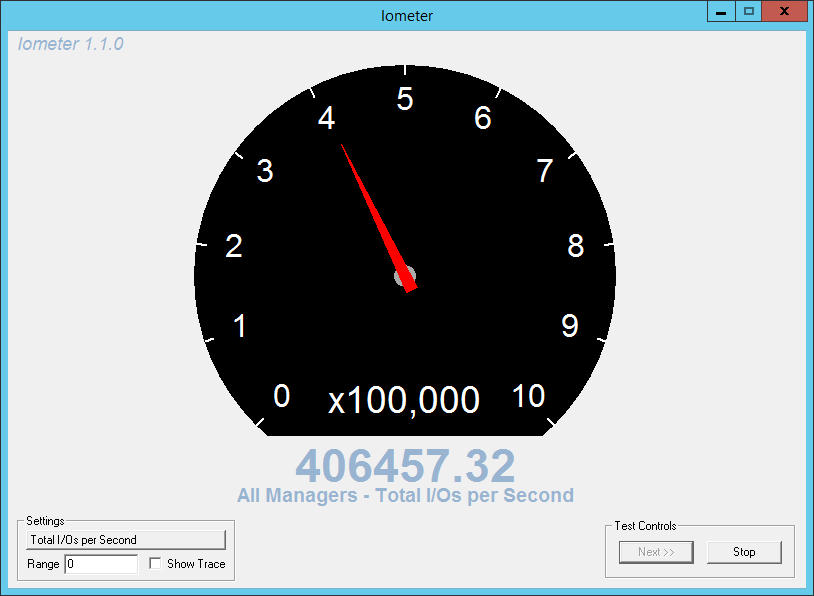
The server's Intel NVMe SSD delivers high IOPS for random read operations
Storming NVMe performance
Moving straight to NVMe performance testing, we preconditioned the Intel NVMe SSD by running Iometer configured for 4KB random write operations and left it to fill up the entire drive with its test file.
Using a queue depth of 32 and four disk workers, we set Iometer to run a 70/30 random read/write mix. After leaving it to settle for a couple of hours, we saw it record a steady 160,000 IOPS.
For 4KB random read ops we recorded a whopping 406,000 IOPS short of Intel's claimed 450,000 IOPS but impressive nonetheless. Random write performance is tops with Iometer reporting a steady 90,000 IOPS nearly twice Intel's published results for the P3600.
Tests using 8KB transfer request sizes were roughly in line with Intel's figures. Random read ops returned 240,000 IOPS while random writes gave us 34,000 IOPS.
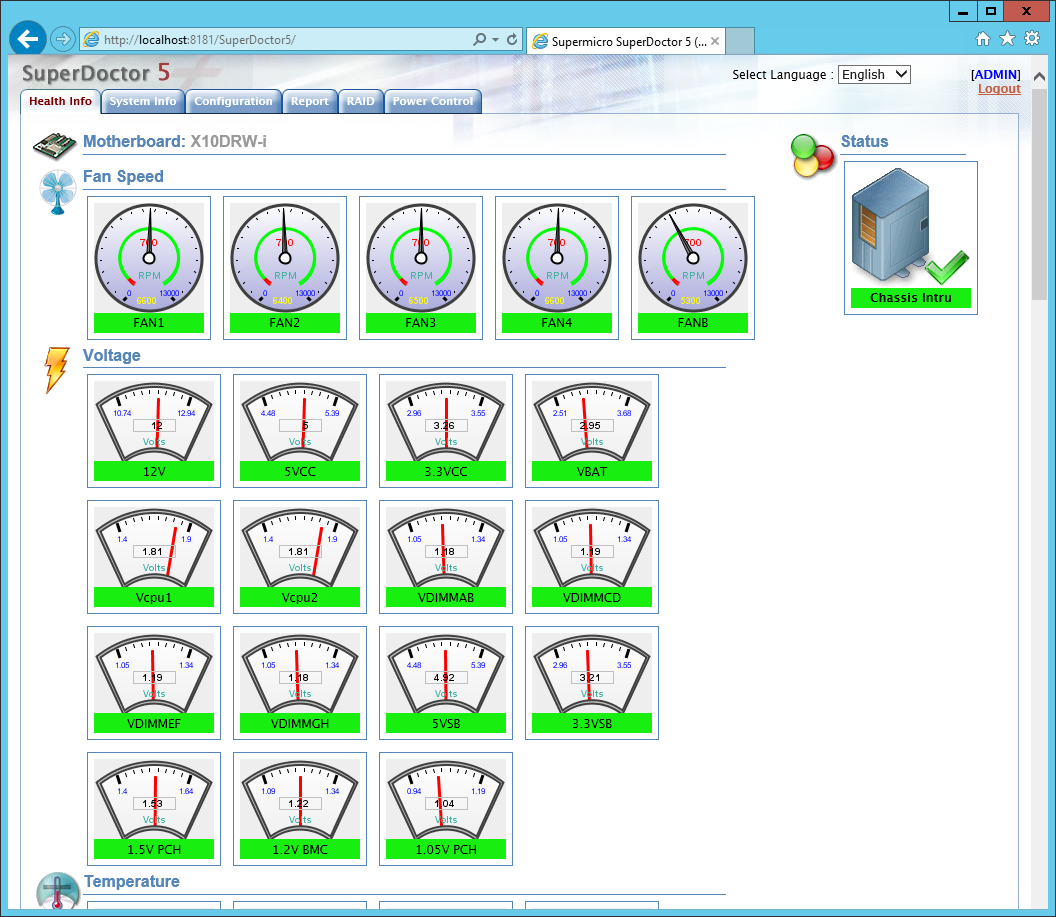
A tad gaudy, but SuperDoctor provides plenty of information about critical components
Build and processing power
The chassis is a good fit for smaller rack or data cabinets as it's only 61cms deep. Our only concern is the internal cables from the storage controllers are routed in front of the five cold-swap cooling fans and slightly impede air flow through them.
Also, unlike Broadberry's excellent XE5-R1208, the 361p doesn't offer embedded 10GbE and only has a couple of Gigabit ports. You can add industry standard 10GbE PCI-e cards but with the PCIe-NVMe card already in place, you only have one free expansion slot.
Boston opted to fit the 361p with a pair of 2.3GHz E5-2650 v3 Xeons. These CPUs represent the entry point of Intel's Advanced family of Haswell-EPs and deliver 10-cores apiece along with 25MB of L3 cache.
The price includes 64GB of fast DDR4 RDIMM memory which can be pushed to a maximum of 512GB. If you can afford 64GB LR-DIMM modules, the motherboard's 16 DIMM slots support a maximum of 1TB.
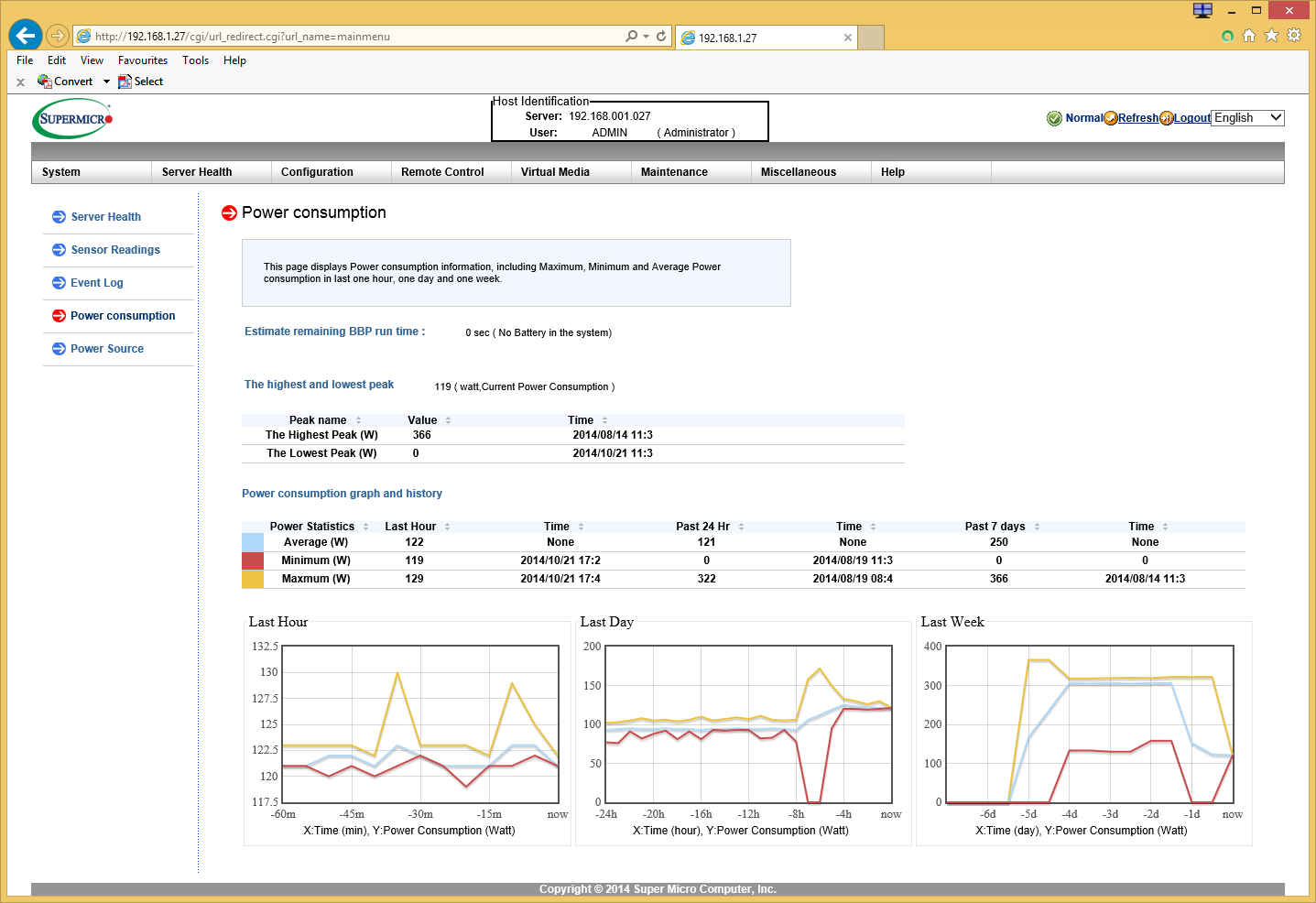
Along with remote control, the server's embedded RMM provides hourly, daily and weekly power usage graphs
Power and management
Power redundancy is present and correct as the server includes a pair of hot-plug 750W PSUs. Combine these with the low 105W TDP of the CPUs and you have a reasonably power efficient server.
With Windows Server 2012 R2 in idle, we measured a draw of 152W peaking at 305W under heavy load from SiSoft Sandra. Broadberry's XE5-R1208 and its pair of 14-core E5-2683 v3 Xeons pulled 150W in idle but peaked at a higher 410W when under load.
It's not as flashy as Dell's iDRAC8 or HP's iLO4, but Supermicro's embedded RMM provides a base set of features allowing the server to be remotely managed. From its web interface, we could monitor system vitals, control power and view historical graphs of power consumption (although we couldn't export its data).
Supermicro has also done a lot of work on its SuperDoctor SNMP management utility. Its dashboard of graphs and speedo dials provides plenty of real-time information, it can send out email alerts when thresholds are breached and it can now show the status of the RAID mezzanine card and attached drives.
Overall
The VS 361p initially looks expensive but this should be put into perspective as similarly specified Dell PowerEdge R630 will set you back nearly 13,500. Bostons choice of SSDs do make up a large portion of the price but the payback is lightning quick storage for I/O hungry apps.
Verdict
Boston’s slim-line rack server and its NVMe SSD packs a punch in the storage department and is a good choice for I/O intensive workloads. It combine this prowess with E5-2600 v3 Xeons and 12Gbps SAS but the SSDs aren’t cheap.
Chassis: Supermicro 116AC2-R706WB 1U rack
Motherboard: Supermicro X10DRW-i
CPU: 2 x 2.3GHz Xeon E5-2650 v3 (10-core, 25MB L3 cache)
Memory: 64GB 2133MHz DDR4 expandable to 1TB
Storage: 1.2TB Intel P3600 SSD, 2 x 400GB Seagate 1200 SSDs (max 10 drives)
RAID: Supermicro AOC-S3108-H8
Array support: RAID0, 1, 10, 5, 6, 50, 60
Other card: Supermicro AOC-SLG3-2E4 PCI-e 3 to NVMe
Expansion: 2 x PCI-e Gen3 slots (1 free)
Network: 2 x Gigabit
Other ports: 6 x USB 3
Power: 2 x 750W hot-plug PSUs
Management: Supermicro RMM with 10/100 port
Warranty: 3yrs on site NBD
Dave is an IT consultant and freelance journalist specialising in hands-on reviews of computer networking products covering all market sectors from small businesses to enterprises. Founder of Binary Testing Ltd – the UK’s premier independent network testing laboratory - Dave has over 45 years of experience in the IT industry.
Dave has produced many thousands of in-depth business networking product reviews from his lab which have been reproduced globally. Writing for ITPro and its sister title, PC Pro, he covers all areas of business IT infrastructure, including servers, storage, network security, data protection, cloud, infrastructure and services.
-
 Trump's AI executive order could leave US in a 'regulatory vacuum'
Trump's AI executive order could leave US in a 'regulatory vacuum'News Citing a "patchwork of 50 different regulatory regimes" and "ideological bias", President Trump wants rules to be set at a federal level
By Emma Woollacott Published
-
 Microsoft Excel is still alive and kicking at 40 – and it's surging in popularity as 82% of finance professionals report ‘emotional attachment’ to the spreadsheet software
Microsoft Excel is still alive and kicking at 40 – and it's surging in popularity as 82% of finance professionals report ‘emotional attachment’ to the spreadsheet softwareNews A recent survey found Gen Z and Millennial finance professionals have a strong “emotional attachment” to Microsoft Excel
By Emma Woollacott Published
-
 LastPass hit with ICO fine after 2022 data breach exposed 1.6 million users – here’s how the incident unfolded
LastPass hit with ICO fine after 2022 data breach exposed 1.6 million users – here’s how the incident unfoldedNews The impact of the LastPass breach was felt by customers as late as December 2024
By Emma Woollacott Published
